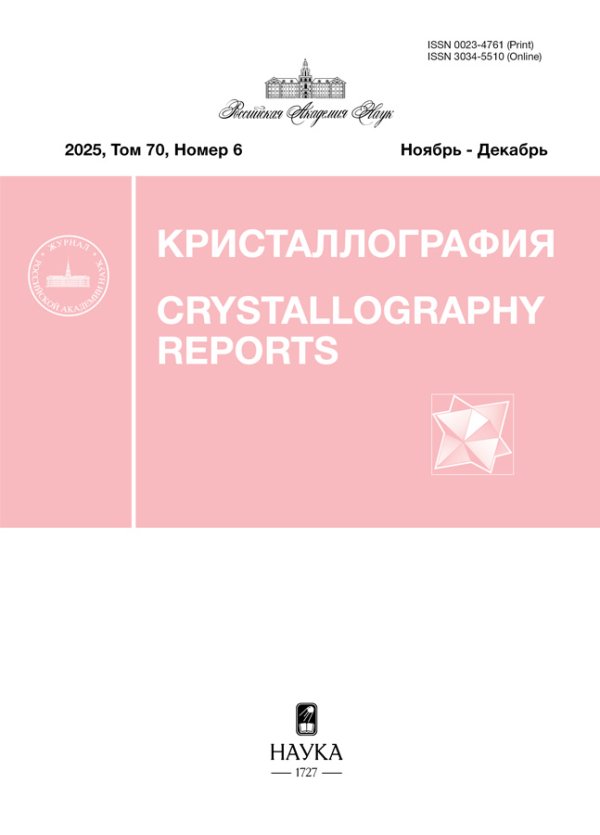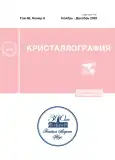Effect of Microgravity on the Crystallization of Cardiotoxin from the Venom of Spectacled Cobra Naja naja
- Authors: Dubova K.M.1,2, Dubovskii P.V.3, Utkin Y.N.3, Samygina V.R.1,2
-
Affiliations:
- National Research Centre “Kurchatov Institute”, 123182, Moscow, Russia
- Shubnikov Institute of Crystallography, Federal Scientific Research Centre “Crystallography and Photonics,” Russian Academy of Sciences, 119333, Moscow, Russia
- Shemyakin–Ovchinnikov Institute of Bioorganic Chemistry, Russian Academy of Sciences, 117997, Moscow, Russia
- Issue: Vol 68, No 6 (2023)
- Pages: 902-906
- Section: STRUCTURE OF MACROMOLECULAR COMPOUNDS
- URL: https://journals.rcsi.science/0023-4761/article/view/231823
- DOI: https://doi.org/10.31857/S0023476123600465
- EDN: https://elibrary.ru/HZBNYG
- ID: 231823
Cite item
Full Text
Abstract
Cardiotoxins, which belong to the family of three-finger toxins, are the main components of cobra venom. They exhibit various types of biological activity, including antimicrobial and cytotoxic against cancer cells. Data on the minimal structural differences between individual toxins are necessary for understanding the molecular mechanisms of their action. This information can be obtained by high-resolution X-ray diffraction analysis. The influence of microgravity on the crystal packing and diffraction quality of crystals of cardiotoxin from cobra Naja naja has been investigated. Cardiotoxin crystals, which were grown on the International Space Station, provided maximally high resolution for the structure of this toxin. Protein crystallized extremely in the hexagonal space group, whereas more than half of crystals grown under laboratory conditions belonged to the orthorhombic system.
About the authors
K. M. Dubova
National Research Centre “Kurchatov Institute”, 123182, Moscow, Russia; Shubnikov Institute of Crystallography, Federal Scientific Research Centre “Crystallography and Photonics,” Russian Academy of Sciences, 119333, Moscow, Russia
Email: lera@crys.ras.ru
Россия, Москва; Россия, Москва
P. V. Dubovskii
Shemyakin–Ovchinnikov Institute of Bioorganic Chemistry, Russian Academy of Sciences, 117997, Moscow, Russia
Email: lera@crys.ras.ru
Россия, Москва
Yu. N. Utkin
Shemyakin–Ovchinnikov Institute of Bioorganic Chemistry, Russian Academy of Sciences, 117997, Moscow, Russia
Email: lera@crys.ras.ru
Россия, Москва
V. R. Samygina
National Research Centre “Kurchatov Institute”, 123182, Moscow, Russia; Shubnikov Institute of Crystallography, Federal Scientific Research Centre “Crystallography and Photonics,” Russian Academy of Sciences, 119333, Moscow, Russia
Author for correspondence.
Email: lera@crys.ras.ru
Россия, Москва; Россия, Москва
References
- Khalil A., Elesawy B.H., Ali T.M. et al. // Molecules. 2021. V. 26. P. 4941. https://doi.org/10.3390/molecules26164941
- Dubovskii P.V., Efremov R.G. // Expert Rev. Proteomics. 2018. V. 15. P. 873. https://doi.org/10.1080/14789450.2018.1537786
- Kalita B., Utkin Y.N., Mukherjee A.K. // Toxins (Basel). 2022. V. 14. P. 839. https://doi.org/10.3390/toxins14120839
- Joubert F.J. // Eur. J. Biochem. 1977. V. 74. P. 387. https://doi.org/10.1111/j.1432-1033.1977.tb11403.x
- Gayatri S., Gorai B., Sivaraman T. // Res. J. Pharm. Biol. Chem. Sci. 2016. V. 7. P. 936.
- Konshina A.G., Dubovskii P.V., Efremov R.G. // Curr. Protein Pept. Sci. 2012. V. 13 (6). P. 570.
- Дубовский П.В., Уткин Ю.Н. // Acta Naturae. 2014. Т. 6. № 3. С. 12.
- Chien K.Y., Chiang C.M., Hseu Y.C. // J. Biol. Chem. 1994. V. 269. P. 14473.
- Dubovskii P.V., Ignatova A.A., Alekseeva A.S. // Toxins. 2022. V. 15. P. 6. https://doi.org/10.3390/toxins15010006
- Dubovskii P.V., Dubova K.M., Bourenkov G. et al. // Toxins. 2022. V. 14. P. 149. https://doi.org/10.3390/toxins14020149
- Luna A., Meisel J., Hsu K. et al. // NPJ Microgravity. 2020. V. 6. P. 12. https://doi.org/10.1038/s41526-020-0102-3
- Shabalin I.G., Serov A.E., Skirgello O.E. et al. // Crystallography Reports. 2010. V. 55 P. 806. https://doi.org/10.1134/S1063774510050159
- Timofeev V., Samygina V. // Crystals. 2022. V. 13. P. 71. https://doi.org/10.3390/cryst13010071
- Esposito L., Sica F., Sorrentino G. et al. // Acta Cryst. D. 1998. V. 54. P. 386. https://doi.org/10.1107/s0907444997011992
- Dubova K.M., Sokolov A.V., Gorbunov N.P. et al. // Crystallography Reports. 2018. V. 63. P. 951. https://doi.org/10.1134/S1063774518060111
- Tanaka H., Inaka K., Sughiyama Sh. // J. Synchrotron Rad. 2004. V. 11. P. 45. https://doi.org/10.1107/S0909049503023446
- Takahashi S., Tsurumura T., Aritake K. et al. // Acta Cryst. F. 2010. V. 66. P. 846. https://doi.org/10.1107/S1744309110020828
- Boyko K.M., Timofeev V.I., Samygina V.R. et al. // Crystallography Reports. 2016. V. 61. № 5. P. 718. https://doi.org/10.1134/S1063774516050059
- Kabsch W. // Acta Cryst. D. 2010. V. 66. P. 133. https://doi.org/10.1107/S0907444909047374
- Evans P.R., Murshudov G.N. // Acta Cryst. D. 2013. V. 69. P. 1204. https://doi.org/10.1107/S0907444913000061
- Agirre J., Atanasova M., Bagdonas H. et al. // Acta. Cryst. D. 2023. V. 79. P. 449. https://doi.org/10.1107/ S2059798323003595
- Schrödinger L., DeLano W. 2020. PyMOL. http://www.pymol.org/pymol
- Chruszcz M., Potrzebowski W., Zimmerman M.D. et al. // Protein Sci. 2008. V. 17. P. 623. http://www.proteinscience.org/cgi/doi/ 10.1110/ps.073360508
- Shabalin I.G., Tikhonova T.V., Polyakov K.M. et al. // EMBL Annual. 2007. Rep. 2. P. 109.
- Eistrikh-Heller P.A., Rubinsky S.V., Samygina V.R. et al. // Crystallography Reports. 2021. V. 66. P. 777. https://doi.org/10.1134/S1063774521050059
- Inaka K., Takahashi S., Aritake K. et al. // Cryst. Growth Des. 2011. V. 11. P. 2107. https://doi.org/10.1021/cg101370v
- Rahman R.N., Ali M.S., Leow T.C. et al. // Gravitational and Space Biology. 2010. V. 23. P. 89.
Supplementary files













